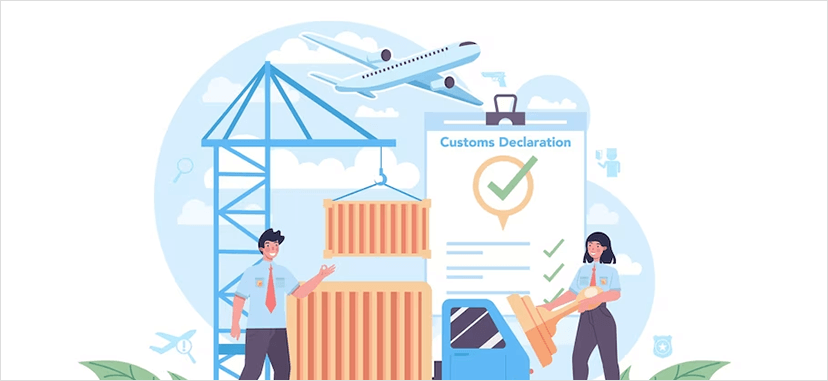
Click the button to start reading
Revamp Your Supply Chain Efficiency: Nearshoring as Your Ultimate Solution
You’re a business dynamo, a visionary leader with a dream to make a difference. But your supply chain – that delicate, interconnected web that keeps your operation humming – is causing you sleepless nights. You’ve got company in this quandary. And, luckily, there’s a strategy that can turn those supply chain nightmares into a dream of efficiency: nearshoring.
In the fiercely competitive market of today, your supply chain isn’t just a necessity—it’s the lifeblood of your business. But managing this complex beast amidst global uncertainties can feel like trying to tame a wild stallion. Enter nearshoring, your secret weapon in the quest for supply chain mastery.
In this article, we’ll dive into the world of nearshoring and show you how it can help you overcome supply chain challenges. By the end, you’ll have a clear understanding of what nearshoring is, why it’s crucial for your business, and how to effectively implement it.
So, sit back, relax, and let’s explore how nearshoring can transform your supply chain. From identifying the right functions to nearshore to finding the ideal partner and navigating customs, we’ve got you covered. You’ll walk away with the insights you need to make informed decisions and take your business to new heights.

What Is Nearshoring and Why Should You Care?
You may have heard of nearshoring, but do you really know what it means and how it can benefit your business? Let’s dig into the concept and discover why it’s essential to consider nearshoring in today’s fast-paced, competitive market.
Defining Nearshoring and Its Benefits
Nearshoring refers to the practice of outsourcing certain business functions to companies located in countries that are geographically closer to your home country. This strategy offers several advantages:
- Cost Savings: Nearshoring can be more cost-effective than offshoring, as it typically involves lower labor and operational costs.
- Cultural Compatibility: By working with partners in similar time zones and cultural backgrounds, communication becomes smoother and more efficient.
- Faster Response Times: Proximity allows for quicker collaboration, faster decision-making, and reduced lead times.
- Greater Control: With nearshoring, you can maintain a closer relationship with your partners, allowing for increased oversight and quality control.
The Difference Between Nearshoring, Onshoring, and Offshoring
Understanding the distinctions between nearshoring, onshoring, and offshoring will help you make more informed decisions about your supply chain strategy:
Nearshoring
As previously mentioned, nearshoring involves outsourcing to nearby countries. This approach balances cost savings with the benefits of geographical and cultural proximity.
Onshoring
Onshoring, also known as reshoring, refers to the process of bringing outsourced business functions back to your home country. While it may involve higher costs, it can lead to increased control and easier communication.
Offshoring
Offshoring is the practice of outsourcing business functions to countries that are far away, often with lower labor costs. While it can offer significant cost savings, challenges may arise due to cultural differences, time zone gaps, and communication barriers.
Real-life Examples of Companies That Have Successfully Implemented Nearshoring
To give you a better sense of how nearshoring can work in practice, let’s look at some successful examples:
- Apple: The tech giant nearshored some of its production facilities to Brazil, benefiting from lower labor costs and easier access to the growing Latin American market.
- IKEA: The Swedish furniture retailer nearshored production from Asia to Eastern Europe, reducing lead times and transportation costs.
- Ford: The American automaker nearshored its engine production from Mexico to Cleveland, Ohio, capitalizing on skilled labor and proximity to their US assembly plants.

Two Steps: How to Implement Nearshoring in Your Business
Well, let’s hop right into it. You’re here because you’re considering nearshoring as a way to boost your business. That’s terrific! The question is, how do you get from considering nearshoring to actually doing it? Don’t worry, we’ve got you covered. Let’s delve into the two key steps that you can start applying today.
Step 1: Identifying the Right Functions to Nearshore
First things first. Before you can even think about who your nearshore partner might be, you’ve got some introspection to do. It’s all about figuring out what parts of your business are ripe for the nearshoring pickings.
Examining Your Business Processes
So, you’re sitting there, maybe sipping a coffee or tea, wondering, “Which of my business processes could take a trip offshore?” A fair question indeed. You might want to look at those tasks that are gobbling up a whole lot of your resources or those areas where in-house expertise is more of a ‘wish list’ item than a reality. Are there any bottlenecks that are causing a stir? These could be the exact candidates for nearshoring that you’re looking for.
Common Functions That Are Often Nearshored
But what does nearshoring look like in the wild, you ask? Well, many businesses have found success nearshoring functions like manufacturing, IT management, and logistics. Imagine, for instance, a US-based tech startup deciding to nearshore its IT support to Canada. The time zones are agreeable, the communication is seamless, and the cost savings? Well, they’re nothing to sniff at.
Step 2: Finding the Perfect Nearshore Partner
Now that you’ve got a handle on what to nearshore, you’re onto step two: the quest for the perfect nearshore partner. This is a bit like online dating for your business – you want to find that perfect match.
What to Look for in a Nearshore Partner
Location, language, culture, and expertise—these are the dating profile must-haves of your nearshore partner. Say you’re thinking of nearshoring customer service; you’re going to want a partner with a strong grasp of your customer’s language and a deep understanding of their culture.
How to Vet Potential Partners for Quality and Reliability
And just like in online dating, you can’t take everything at face value. You’ve got to do your homework. Look at your potential partner’s reputation and track record. What are their previous clients saying? Do they have any certifications that give a thumbs-up to their quality and reliability?
Building Strong Relationships with Your Nearshore Partners
But remember, nearshoring isn’t just about sending tasks elsewhere; it’s about building a partnership. Communication is key, and mutual respect and a shared vision will help make this relationship a success.
So there you have it—two steps that will get you on your way to implementing a successful nearshoring strategy. And remember, this isn’t just about cost savings or efficiency (although those are pretty great), it’s about giving your business the best chance to thrive in an ever-competitive market. Ready to take the leap?

Making the Most of Your Nearshoring Experience
With the right functions identified and the perfect partner found, you’re now poised at the starting line of the nearshoring race. So, what’s next on the agenda? It’s all about optimizing the process and reaping the benefits that nearshoring has in store for your business. Ready to explore the rewarding journey ahead? Buckle up, because we’re about to delve into how you can truly maximize your nearshoring experience.
Shorter Transit Times and Cheaper Imports
Who doesn’t like a good bargain, right? The thing is, nearshoring can bring you more than just reduced costs. It can also give you back your time. Let’s dissect this a bit, shall we?
How Nearshoring Can Reduce Transit Times and Overall Shipping Costs
Imagine the scenario where your products are being shipped from a factory far, far away. Now, cut that distance in half. No, even better, cut it down to a third.
That’s what nearshoring offers. You’re no longer waiting around for weeks, biting your nails, and hoping your shipment arrives in time. With nearshoring, your goods are practically on your doorstep before you can say “supply chain efficiency.”
But hold on a minute, what about the cost savings? Yes, those are also part of the package. When you’re shipping goods from closer to home, your wallet breathes a sigh of relief.
The Advantages of Sourcing from Countries with Free Trade Agreements (FTAs)
And let’s not forget about Free Trade Agreements (FTAs). These babies are like the golden tickets of international trade. With reduced tariffs and increased protections, they make sourcing your goods becomes a more affordable and secure process. It’s like having your cake and eating it too.
Overcoming Language and Cultural Barriers
Now let’s talk about language and culture. They’re like the spices in your favorite dish. Without them, things might seem a bit bland. But if you handle them right, they can take your business relationship to a whole new level.
Why Effective Communication Is Crucial in Nearshoring Partnerships
Let’s face it, a game of broken telephone never ends well, especially when it’s your business on the line. Communication is the lifeblood of any successful partnership, and nearshoring is no exception. Being able to clearly articulate your needs, and understand your partner’s, is a game-changer.
Tips for Bridging Language and Cultural Gaps
Okay, so how do you bridge these language and cultural gaps? You might be thinking of downloading a language-learning app or buying a phrasebook, but there’s more to it. It’s about understanding the context, the nuances, and the unspoken rules. It’s about showing respect for your partner’s culture and being open to learning from them.

Alternatives to Nearshoring: Onshoring and Offshoring, the Other Players in Town
You’re smart. You’re savvy. You know nearshoring isn’t the only option when it comes to optimizing your business operations. Onshoring and offshoring also have their moments in the sun, and it’s important to understand where they shine.
Onshoring and Offshoring: The Good, the Bad, and the Strategic
Onshoring, keeping your operations domestic, has its perks. No language barriers, similar time zones, and cultural familiarity can make things a breeze. But don’t forget the high labor and operational costs that come with it.
Offshoring, on the other hand, promises lower costs but with a different set of challenges – significant time differences, potential language barriers, and extended shipping timelines.
So, how to choose? It’s a game of weighing pros and cons against your business needs. It’s about understanding your priorities and aligning them with the strategy that best serves your goals.

Navigating Customs and Compliance Issues: Dodging the Red Tape
Just as you thought you had it all figured out, along comes the customs process. Don’t worry, you’re not the first to feel a little lost at this stage.
Getting a Handle on Customs
For businesses engaged in nearshoring, understanding the customs process is crucial. Here’s a quick lowdown: You’ll need to provide necessary documents, pay relevant duties, and ensure your goods meet regulatory requirements. Sounds daunting, but it’s doable.
Know Your Documents and Regulations
Staying on top of important documents and regulations is half the battle won. Commercial invoices, packing lists, and certificates of origin are part of the documentation process. And don’t forget about the product-specific regulations!
Streamlining the Process
Is there a way to avoid potential pitfalls and streamline this process? Absolutely. A bit of research, planning, and perhaps hiring a customs broker can make your life a whole lot easier.

Success Stories: Nearshoring in Action
There’s nothing quite like a good success story to inspire and inform. As you consider adopting a nearshoring strategy, it might be helpful to take a page from companies that have already walked this path and emerged victorious.
Companies Excelling in Nearshoring
From tech giants like IBM to consumer goods companies like Procter & Gamble, many have embraced nearshoring and reaped the benefits. They’ve managed to reduce costs, improve efficiency, and foster innovation – all at once.
GE Appliances: Streamlining Production with Nearshoring
Then there’s General Electric, a household name in appliances. In a decisive move, they brought back much of their manufacturing from China to a revitalized facility in Louisville, Kentucky. But here’s the twist: they didn’t just onshore, they nearshored too, shifting certain functions to Mexico. This hybrid strategy allowed them to cut down on shipping times, reduce inventory, and respond more quickly to changes in consumer demand. The takeaway? Don’t be afraid to mix and match your sourcing strategies to meet your unique business needs.
American Express: Nearshoring Customer Service Operations
American Express provides yet another compelling example. The financial services giant made a strategic decision to nearshore their customer service operations to Mexico and Canada. The result was not just cost savings but also improved customer satisfaction scores, demonstrating how nearshoring can significantly enhance your customer service and your brand image.
Lessons Learned and Applied
What’s the secret sauce? It’s about picking the right partners, understanding cultural nuances, and maintaining open lines of communication. And remember, these aren’t just tales of triumph but blueprints for success that you can apply to your own nearshoring journey.

Wrapping It Up Are You Ready to Transform Your Supply Chain with Nearshoring
So, here we are at the finish line. You’ve journeyed through the intricate landscape of nearshoring, and now it’s time to take a moment to reflect on what you’ve learned.
A Look Back: The Benefits of Nearshoring
Remember the reasons why nearshoring could be a game-changer for your business? Let’s quickly jog through them one more time. Nearshoring can offer you:
- Reduced shipping times and costs — By working with partners closer to home, you’re shortening the supply chain and potentially lowering transportation expenses.
- Improved communication — Nearshoring can minimize language and cultural barriers, making collaboration smoother and more efficient.
- Access to talent and technology — Nearshoring regions often have skilled workers and advanced technology that can give your business a competitive edge.
- Flexibility and responsiveness — Shorter supply chains mean you can react more quickly to changes in demand or disruptions in the supply chain.
Your Next Move
But what does all this mean for you? How can you take these insights and turn them into tangible action for your business?
The first step is to do a deep dive into your own operations. Identify the areas where you could use a helping hand. Maybe it’s manufacturing, maybe it’s customer service, or perhaps it’s something else entirely.
Next, do your homework. Investigate potential nearshoring locations, analyze the skillsets available, and compare costs. Remember, it’s not just about finding a cheap option — it’s about finding a partner who can add value to your business.
Then, reach out. Start conversations with potential nearshoring partners. Ask questions. Share your goals and expectations. This is the beginning of what could be a fruitful partnership, so take the time to lay a solid foundation.
And finally, be bold. Embarking on a nearshoring journey is a big step, but remember, every great journey begins with a single step. You’ve got the knowledge, you’ve got the tools, and now it’s time to make it happen.
So, are you ready to transform your supply chain with nearshoring? The future of your business could be just a shore away.
















